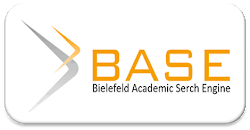Dari Ganja ke Palawija: Transformasi Masyarakat Petani di Lamteuba Aceh Besar
From Ganja to Palawija: Farming Community Transformation in Lamteuba, Aceh Besar
DOI:
https://doi.org/10.22373/jsai.v3i1.1585Keywords:
Transformation, Cannabis Farmers, Palawija, Lamteuba CommunityAbstract
This article aims to identify and describe the transformation process and the factors that change the activities of cannabis farmers to become Palawija farmers in Lamteuba Aceh Besar. This study uses a qualitative approach and a descriptive method. The data collection techniques of this research consisted of documentation, interviews, observations, and literature studies. This study found that the process and factors causing the transformation of cannabis farmers into Palawija farmers in Gampong Lamteuba were, among others, due to bad experiences among farmers, government support through outreach activities, and awareness of the farmers themselves.
AbstrakArtikel ini bertujuan untuk mengidentifikasi dan mendeskripsikan proses transformasi dan faktor-faktor yang mengubah aktivitas petani ganja menjadi petani Palawija di Lamteuba Aceh Besar. Penelitian ini menggunakan pendekatan kualitatif dan metode deskriptif. Teknik pengumpulan data penelitian ini terdiri dari dokumentasi, wawancara, observasi, dan studi kepustakaan. Penelitian ini menemukan bahwa proses dan faktor penyebab transformasi petani ganja menjadi petani Palawija di Gampong Lamteuba antara lain karena pengalaman buruk di kalangan petani, dukungan pemerintah melalui kegiatan sosialisasi, dan kesadaran dari petani itu sendiri.
References
Affan, Heyder. 2016. “Kuliner Mie Aceh, Antara Isu Ganja, Hikmah Tsunami Dan GAM.” BBC Indonesia. Retrieved April 30, 2022 (https://www.bbc.com/indonesia/majalah/2016/01/160108_majalah_bisnis_mieaceh).
Agung, Suseno. 2012. “Evaluasi Perencanaan Program Alternative Developmentalih Fungsi Lahan Ganja Di Mukim Lamteuba, Kec. Seulimeum, Kab. Aceh Besar, Nad.” Universitas Indonesia.
BNN. 2014. Laporan Akhir Survei Nasional Perkembangan Penyalahgunaan Narkoba Tahun 2014.
Creswell, John W. 2015. Penelitian Kualitatif & Desain Riset, Memilih Antara Lima Pendekatan. Yogyakarta: Pustaka Pelajar.
Fadilah, Rizki Sari. 2015. “Upaya Unodc ( United Nations Office on Drugs and Crime ) Dalam Menanggulangi Permasalahan Narkoba Di Indonesia.” Jurnal Online Mahasiswa Fakultas Ilmu Sosial Dan Ilmu Politik Universitas Riau 2(2):1–16.
Imanda, Fitra, Agung Kumoro Wahyu Wibowo, and Suparno. 2019. “Penerapan Prinsip Permakultur Dalam Strategi Perancangan Pusat Penelitian Ganja Di Aceh.” Jurnal SENTHONG 2019 2(1):343–52.
Jawapos. 2017. “Petani Ganja Tobat, Pilih Tanam Padi, Hasilnya Halal.” Retrieved April 30, 2022 (https://www.jawapos.com/jpg-today/20/07/2017/petani-ganja-tobat-pilih-tanam-padi-hasilnya-halal/).
Lokollo, Leonie, Yonna Beatrix Salamor, and Erwin Ubwarin. 2020. “Kebijakan Formulasi Undang-Undang Narkotika Dalam Legalisasi Penggunaan Ganja Sebagai Bahan Pengobatan Di Indonesia.” Jurnal Belo 5(2):1–20.
Miles, Matthew B., and Michael A. Huberman. 1994. Qualitative Data Analysis. Second Edi. London: SAGE Publications.
Mudassir, Rayful. 2019. “Kuliner Aceh, Ganja, Dan Fatwa Haram.” Lifestyle Bisnis.Com. Retrieved April 30, 2022 (https://lifestyle.bisnis.com/read/20191109/220/1168644/kuliner-aceh-ganja-dan-fatwa-haram).
Ningrum, Desi Aditia, and Iqbal Fadil. 2017. “Jejak Ganja Di Kuliner Aceh.” Retrieved April 30, 2022 (https://www.merdeka.com/khas/jejak-ganja-di-kuliner-aceh.html).
Putri, Dania, and Tom Blickman. 2016. “Ganja Di Indonesia Pola Konsumsi, Produksi, Dan Kebijakan.” Drug Policy Briefing Transnational Institute 44:1–24.
Rosmery, Rosmery, and Arwina Sufika. 2019. “The Development of Creative Tourism Villages in Aceh, Indonesia.” 259(Isot 2018):274–77.
Sugiyono, Sugiyono. 2013. Metode Penelitian Kualitatif. Bandung: Bandung: Alfabeta.
Downloads
Published
How to Cite
Issue
Section
License
- Authors retain copyright and grant the journal right of first publication with the work simultaneously licensed under an Attribution-NonCommercial-ShareAlike 4.0 International (CC BY-NC-SA 4.0) that allows others to share the work with an acknowledgment of the work's authorship and initial publication in this journal.
- Authors are able to enter into separate, additional contractual arrangements for the non-exclusive distribution of the journal's published version of the work (e.g., post it to an institutional repository or publish it in a book), with an acknowledgment of its initial publication in this journal.
- Authors are permitted and encouraged to post their work online (e.g., in institutional repositories or on their website) prior to and during the submission process, as it can lead to productive exchanges, as well as earlier and greater citation of published work.














